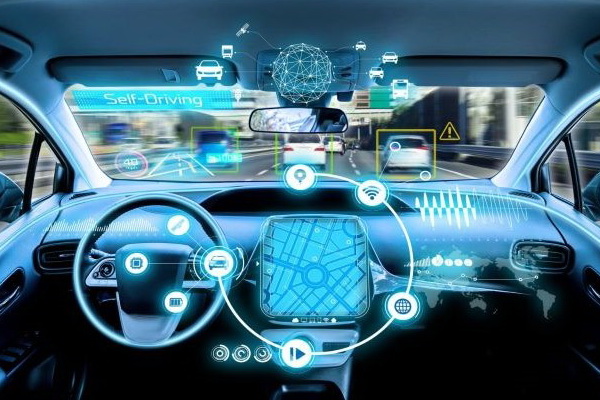Lectures:
1. Introduction to the sensors used in the automotive industry. Semester work selection.
2. Proposal for a new product design, 3D modelling and functionality simulation of the prototype realization.
3. Definition of the materials used on the basis of their physical-chemical properties, taking into account the costs and environmental standards.
4. Testing of the materials with respect to their physical and mechanical properties, durability and reliability.
5. Measurement of temperature on the principle of thermoelectric effect, thermo resistivity and optical methods. Familiarization with different types of sensors and their comparison.
6. Physical properties of ultrasound, usage of the ultrasound in levels measurements and concentration, environmental influences and materials for quality measurement. Familiarization with different types of sensors and their comparison.
7. Physical principle of the pressure sensors operation, motion sensors and speed. Familiarization with different types of sensors and their comparison.
8. Measurement methods and instrumentation used in the laboratory for testing and validating of the various types of sensors.
9. The draft scheme and circuit boards with regard to electrical properties and EMC for automotive industry
10. Industrial Communication CAN and SENT, speed, its properties comparison.
11. Microprocessors used in the automotive industry, requirements for software development (MISRA) development tools.
12. Development of production technology, manufacturing process development and its implementation I.
13. Development of production technology, manufacturing process development and its implementation II.
14. The life cycle of the product development process, methods and development phase, the links between development steps, checkpoints (V-Cycle, PLC - Product Life Cycle)
Laboratories:
1. Introduction to laboratory regulations, safety training.
2. Familiarization with the work of the prototype shop, methods of screening and 3D technology, 3D printing.
3. Metallographic sample preparation, 3D light microscopy, SEM-EDX analysis of the material.
4. Introduction to DMA, DSC and analysis of rheological variables.
5. Activation and cleaning of polymer surfaces by means of plasma application and methods used for polymers curing.
6. Methods for determination of strength, hardness, ductility and creep characteristics of the material. Fatigue and corrosion tests.
7. Visitation laboratory, familiarity with the issues and technology of thermoelectric measurements.
8. Methods of testing of sensors designed to measure the level, temperature and concentration of synthetic motor oils and urea.
9. Practical demonstration of pressure prototypes, speed and motion sensors.
10. Introduction to the processes of validation and verification of oil and urea sensors.
11. Visit in the hardware laboratory simulation of electrical circuits in PSpice, demonstrations of EMC reports.
12. Visit the software development department, implementation of communication drivers and bus parameters.
13. Microprocessors used in the automotive industry, development and programming tools, standard MISRA
14. The process of introducing a new product into production, instrument and monitor quality, problem-solving methods, customer feedback and its impact on the project.
1. Introduction to the sensors used in the automotive industry. Semester work selection.
2. Proposal for a new product design, 3D modelling and functionality simulation of the prototype realization.
3. Definition of the materials used on the basis of their physical-chemical properties, taking into account the costs and environmental standards.
4. Testing of the materials with respect to their physical and mechanical properties, durability and reliability.
5. Measurement of temperature on the principle of thermoelectric effect, thermo resistivity and optical methods. Familiarization with different types of sensors and their comparison.
6. Physical properties of ultrasound, usage of the ultrasound in levels measurements and concentration, environmental influences and materials for quality measurement. Familiarization with different types of sensors and their comparison.
7. Physical principle of the pressure sensors operation, motion sensors and speed. Familiarization with different types of sensors and their comparison.
8. Measurement methods and instrumentation used in the laboratory for testing and validating of the various types of sensors.
9. The draft scheme and circuit boards with regard to electrical properties and EMC for automotive industry
10. Industrial Communication CAN and SENT, speed, its properties comparison.
11. Microprocessors used in the automotive industry, requirements for software development (MISRA) development tools.
12. Development of production technology, manufacturing process development and its implementation I.
13. Development of production technology, manufacturing process development and its implementation II.
14. The life cycle of the product development process, methods and development phase, the links between development steps, checkpoints (V-Cycle, PLC - Product Life Cycle)
Laboratories:
1. Introduction to laboratory regulations, safety training.
2. Familiarization with the work of the prototype shop, methods of screening and 3D technology, 3D printing.
3. Metallographic sample preparation, 3D light microscopy, SEM-EDX analysis of the material.
4. Introduction to DMA, DSC and analysis of rheological variables.
5. Activation and cleaning of polymer surfaces by means of plasma application and methods used for polymers curing.
6. Methods for determination of strength, hardness, ductility and creep characteristics of the material. Fatigue and corrosion tests.
7. Visitation laboratory, familiarity with the issues and technology of thermoelectric measurements.
8. Methods of testing of sensors designed to measure the level, temperature and concentration of synthetic motor oils and urea.
9. Practical demonstration of pressure prototypes, speed and motion sensors.
10. Introduction to the processes of validation and verification of oil and urea sensors.
11. Visit in the hardware laboratory simulation of electrical circuits in PSpice, demonstrations of EMC reports.
12. Visit the software development department, implementation of communication drivers and bus parameters.
13. Microprocessors used in the automotive industry, development and programming tools, standard MISRA
14. The process of introducing a new product into production, instrument and monitor quality, problem-solving methods, customer feedback and its impact on the project.
